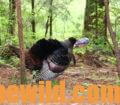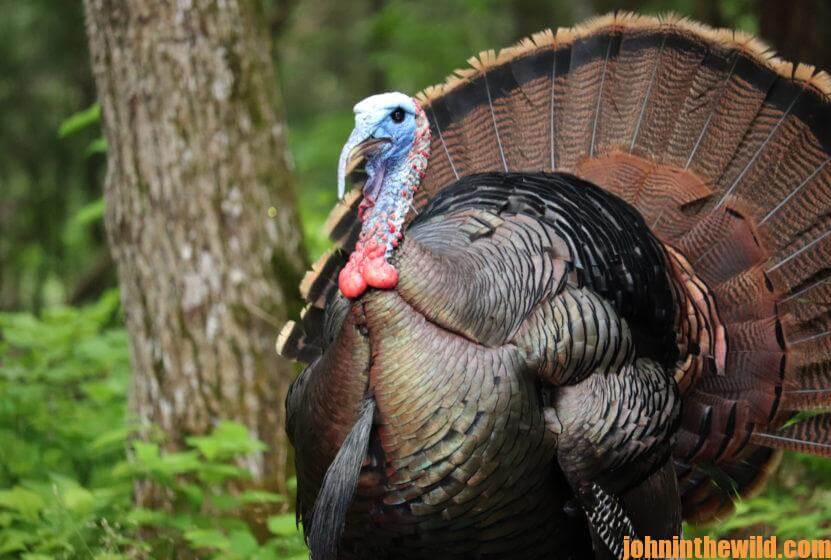Editor’s Note: Alex Rutledge
(https://www.facebook.com/pg/AmericanRootsOutdoors/about/?ref=page_internal) of Birch Tree, Missouri, a master turkey hunter and one of the nation’s top turkey callers, has over 40 years of turkey-hunting experience and teaching about turkeys at seminars. Rutledge knows how to call turkeys, as proved by the many titles he’s accumulated competing in turkey-calling contests over the years, including winning national, regional and state contests. Growing up on a farm and hunting turkeys and other game animals all his life, Rutledge has met several tough-to-hunt turkeys that he considers his professors in the sport of turkey hunting.
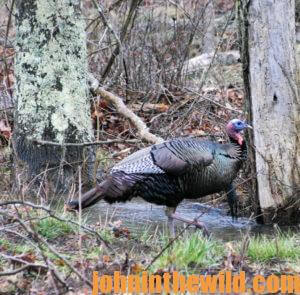 How many times have you called to a bird, and after the first call, he gobbles back to you? However, the next time he gobbles from further away. I call this type of turkey an on-the-move or pushed gobbler. I call him a pushed gobbler because the hens he’s with are pushing him away from you. Even if you try to call to the hens, no matter whether you’re calling quietly or aggressively, they’ll always try to push the gobbler away from you.
How many times have you called to a bird, and after the first call, he gobbles back to you? However, the next time he gobbles from further away. I call this type of turkey an on-the-move or pushed gobbler. I call him a pushed gobbler because the hens he’s with are pushing him away from you. Even if you try to call to the hens, no matter whether you’re calling quietly or aggressively, they’ll always try to push the gobbler away from you.
I was hunting a gobbler late in the morning here in the Ozarks near where I live. Every time I’d call to this turkey, he would move away from me. I knew the only way I could take this turkey was to hunt him as though I was hunting a deer that was moving away from me. I realized if I continued to call to the turkey, I’d do nothing but push him away from me.
I went down in a hollow where the turkey couldn’t see me, got in front of the direction that the turkey was traveling and sat still and quiet. I never called at all. In a little while, the hens with the tom scratched in the leaves, clucking and purring as they fed toward me. Although the tom never gobbled, he was spitting and drumming in the distance. So, I just waited, let the hens come to me and walk by me. I realized that often the gobbler wouldn’t be right with the hens but instead would be 75-100 yards behind them.
These turkeys started moving down a ridge. After the hens had gone by the gobbler, I still could hear him coming. I clucked and purred as softly as I could to make the ole tom think that one of the hens had stayed behind the flock. Within 10 minutes, that On-the-Move Gobbler walked right up to me, and I took him at less than 30 yards. I’d learned that many times the best call you could use when you were hunting a turkey that was gobbling, going away from you, was no call at all.
Here’s what I learned from the On-the-Move Gobbler: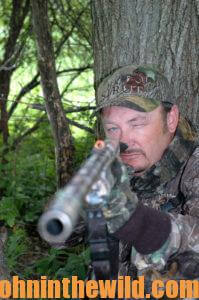
* Use the terrain to hide from the gobbler, and move quickly to get out in front of the direction in which he’s traveling.
* Don’t push too aggressively when you’ve got one of these pushed or on-the-move gobblers coming toward you.
* Don’t use turkey tactics to take a tom, but instead hunt the turkey like you’re hunting a big buck deer by learning where he lives, where he likes to go, what route he most often travels and then get out in front of him. Be as still and as quiet as you can be, and let the turkey come to you.
Remember, we’re learning how to hunt turkeys, not how to call turkeys. Often, if not almost every time you hunt a pushed gobbler, the more you call, the less likely you are to take him.
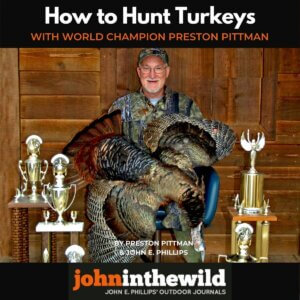 To learn more about turkey hunting, check out John E. Phillips’s book, “How to Hunt Turkeys with World Champion Preston Pittman,” at http://amzn.to/144Irn5 for Kindle and print versions. Click here for Audible version.
To learn more about turkey hunting, check out John E. Phillips’s book, “How to Hunt Turkeys with World Champion Preston Pittman,” at http://amzn.to/144Irn5 for Kindle and print versions. Click here for Audible version.
Tomorrow: How to Hunt Turkeys on Rough Terrain


